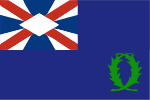Maka

|
Republic of Maka akarar Maka (Makaan) Capital: Tafue
Population: 16,832 (2018) Motto: « Den ghaadaro co kete den Maka ahkaa » Anthem: « Anthem of Maka / Maksaadghaso » |
Loading map... |
Maka, officially the Republic of Maka is a small island state in the northern Asperic Ocean. Located in the Iscuan Chain of islands between Iscu and Ste. Marie and Ste. Helene, Maka is located at the edge of the Plurinesian Sea. It is graced with a tropical climate and favorable trade winds, along with a wealth of biodiversity and native culture. The government of the island is a unicameral federal republic, but due to the small size and economy of the territory it relies on Gobrassanya for foreign relations, trade, and other items. This makes the nation an associated state (similar to a protectorate) of Gobrassanya. It is not a member of the AN, being represented by Gobrassanya, but takes part in many of the AN's sub-organizations as well as some other multi-national agreements. The economy depends mainly on tourism and fishing. A recent drive to fully convert to green energy is beginning to open up electricity as an avenue for growth as well.
Maka was a loose confederation of chieftains when the Ingerish arrived in 1527. The Ingerish quickly imposed colonial government on the natives, who were not able to resist. Maka was quickly absorbed into the Ingerish dominion as a small trading outpost, and the natives suffered from mistreatment. However, very little permanent Ingerish settlement actually occurred, and by the early 1900s Maka was cut loose from the Ingerish Empire, but was annexed by Iscu instead of gaining independence. Maka separated itself from Iscu in 1955 and established the governmental structure of today, but was forced to depend on Gobrassanya for financial aid, setting up the dependent relationship that continues today. The nation has avoided the troubles that plagued Iscu in the 80s, and so has retained a more favorable reputation. The islanders have been able to reclaim their cultural heritage and many practice their traditional religion. The Makaan language is the majority language. Along with their neighbors, the islands have recently seen a bloom in foreign investment and settlers, which has spurred the construction of numerous new resorts and eco-tourism ventures to take advantage of the unique volcanic geography of the islands.
